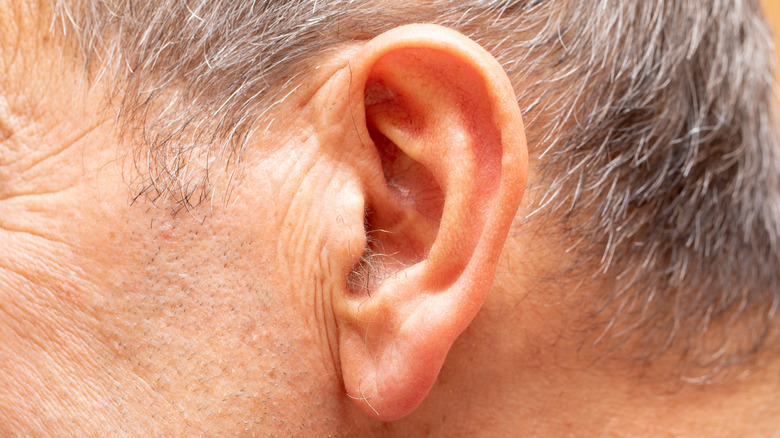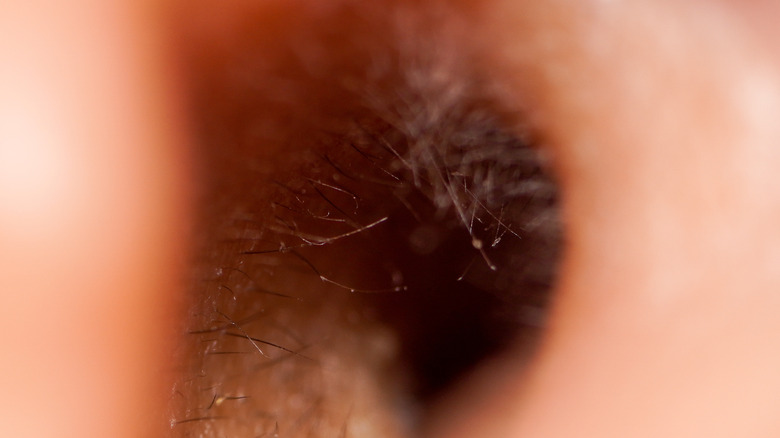Why Do You Grow Hair In Your Ears?
As you age, it's likely that you begin noticing changes in your hair growth. Typically, changes in estrogen and testosterone levels contribute to hair loss and pigmentation changes. According to the Cleveland Clinic, though men and women experience hair loss for different reasons, as every person ages, hair has a shorter life cycle, making it fall out faster than usual. In fact, aging and hormonal changes stop some hair follicles from producing any hair at all.
Unless it is a large amount of hair (if it is, you should pay your doctor a visit), growing hair in strange places like your chin, back, chest, face, nipples, abdomen, knuckles, toes, and nose is also completely normal as you age. According to Prevention, the changes in your body's estrogen and testosterone levels are to blame for the additional hair that might be popping up in strange places on your body, too.
Along with those other body parts mentioned, as you age, you might notice that more hair begins to grow in your ear. Ever wonder why you're constantly pulling out the tweezers or trimmer to tame your ear hairs?
Higher testosterone levels are to blame for additional hair growth in your ears
As it turns out, every single person has at least a thin coating of hair covering their ears. According to Healthline, this hair, that resembles peach fuzz, is actually vellus hair and it covers most of our body to help regulate its temperature. Those thicker, darker hairs growing in your ears that have you pulling out your tweezers are called tragi hairs. Similar to vellus hair, tragi hairs provide protection by growing in your exterior ear canal to form a barrier between your inner ear canal and germs, bacteria, and debris.
For the most part, only minor issues are accompanied by growing additional ear hair, which includes a clogging of the ear canal that can make you more susceptible to swimmer's ear. As Healthline reports, the additional hair growth can cause your ear canal to narrow, leaving less room for excess water to drain out of your ears. However, in one study published in Indian Heart Journal in the 1980s (posted at the National Library of Medicine), researchers attempted to establish a connection between ear hair and an ear lobe crease with an increased risk of coronary artery disease in Indian men. Though a few more studies were published that presented this same connection, Healthline reports that sufficient evidence to prove this theory still doesn't exist.

